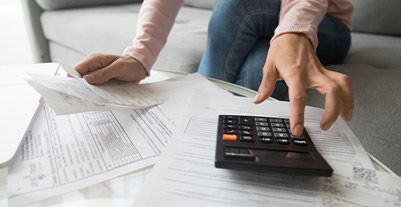Carpet area vs built-up area
A first-time property buyer can easily feel overwhelmed when faced with terms like carpet area, built-up area, and super built-up area — especially when trying to understand the difference between carpet area and built-up area. These phrases, often used in marketing brochures, can be confusing and may seem interchangeable. However, each has a distinct meaning that significantly impacts the property's pricing. In this article, we’ve broken down these commonly used terms for better clarity.
In India, property prices are typically calculated based on the total square footage, so it's important to know exactly what you’re paying for. The introduction of RERA a few years ago has helped bring more transparency to real estate dealings.
Carpet area, built-up area and super built-up area are commonly used terms that describe property specifications in real estate. Avail loan against property from Bajaj Finserv to fund the purchase of house property at attractive interest rates and easy eligibility criteria for loan.
What is carpet area?
It is the net usable floor space available or the area that can be covered by a carpet. It is the wall-to-wall distance of the floor and excludes the thickness of the walls in a house.
How to calculate carpet area?
Carpet area refers to the actual usable floor area within the walls of an apartment, excluding the thickness of inner and outer walls, balconies, common areas, etc. To calculate the carpet area, measure the length and width of each usable room (like bedrooms, living room, kitchen, bathrooms), and multiply them to get the area of each. Then, sum up these areas to get the total carpet area. For example, if a bedroom is 10 ft × 12 ft (120 sq ft) and the living room is 15 ft × 10 ft (150 sq ft), your total carpet area is 270 sq ft.
What is built-up area?
It is a total of the carpet area and wall area, denoted by the wall’s thickness. It usually consists of carpet and wall area in a ratio of 70:30. Before finalising your home purchase, make sure you know what portion will comprise its built-up area.
How to calculate built-up area?
To calculate the built-up area of a property, start with the carpet area—the actual usable area within the walls of the property. Then, add the thickness of the internal and external walls, along with other usable spaces like balconies, terraces, and utility areas. Typically, the built-up area is around 10-20% more than the carpet area. The formula is:
Built-up Area = Carpet Area + Area of Walls + Utility/Balcony Areas
For example, if the carpet area is 1,000 sq. ft. and the walls and other spaces add up to 200 sq. ft., the built-up area would be 1,200 sq. ft.
What is super built-up area?
It is a combination of built-up area and a unit’s common areas like the lift, corridor, lobby, etc. Agents often call it the ‘saleable area’. So, if you find a housing unit with space of 1,200 sq. ft, for instance, check out the carpet and built-up area before finalising its purchase.
Being aware of the differences between these terms can help you understand the value of the property better and get an appropriate mortgage loan.
How to calculate super built-up area?
To calculate the super built-up area of a property, you first need to know the carpet area and the loading factor. The formula is:
Super Built-Up Area = Carpet Area + Proportionate Share of Common Areas
Alternatively,
Super Built-Up Area = Carpet Area × (1 + Loading Factor)
For example, if the carpet area is 1,000 sq. ft. and the loading factor is 30%, the super built-up area will be:
1,000 × (1 + 0.30) = 1,300 sq. ft.
Builders often use this measure for pricing, so understanding it is essential before purchasing property.
Get a loan against property from Bajaj Finserv to finance your purchase at attractive interest rates. Our easy-to-fulfil eligibility criteria for loan against property makes it easy for you to apply. Simply fill the online form to get quick approval and get the loan in your account within 72 hours**.
*Conditions apply
Difference between carpet area, built-up area and super built-up area
Feature |
Carpet area |
Built-up area |
Super built-up area |
Definition |
Usable area within the walls, excluding balconies, terraces, and common spaces. |
Includes carpet area plus thickness of inner walls, balconies, and terraces. |
Includes built-up area plus a proportionate share of common areas like lobbies and staircases. |
Components |
Rooms such as bedrooms, living room, kitchen, and bathrooms. |
Carpet area + wall thickness + balcony/terrace spaces. |
Built-up area + common spaces (lifts, corridors, etc.). |
Usage |
Indicates the functional space available for use within the property. |
Reflects the total physical space occupied by the property. |
Used for calculating the saleable area in real estate transactions. |
Percentage ratio |
Typically 70-80% of the super built-up area. |
Typically 10-15% larger than the carpet area. |
Includes both private and shared spaces, often inflating the perceived size of the property. |
Frequently asked questions
Carpet area is calculated as the total usable area within a property, excluding walls, balconies, and common spaces, by measuring the length and breadth of each usable room.
Loading on carpet area is calculated as:
(Super built-up area - Carpet area) / Carpet area × 100.
It represents the percentage of common area added to the carpet area.
No, the carpet area is the usable space within a property, whereas the super built-up area includes the carpet area plus common spaces like lobbies and staircases.
Yes, the carpet area is generally considered the livable area, as it represents the actual usable space within the property for daily activities.





